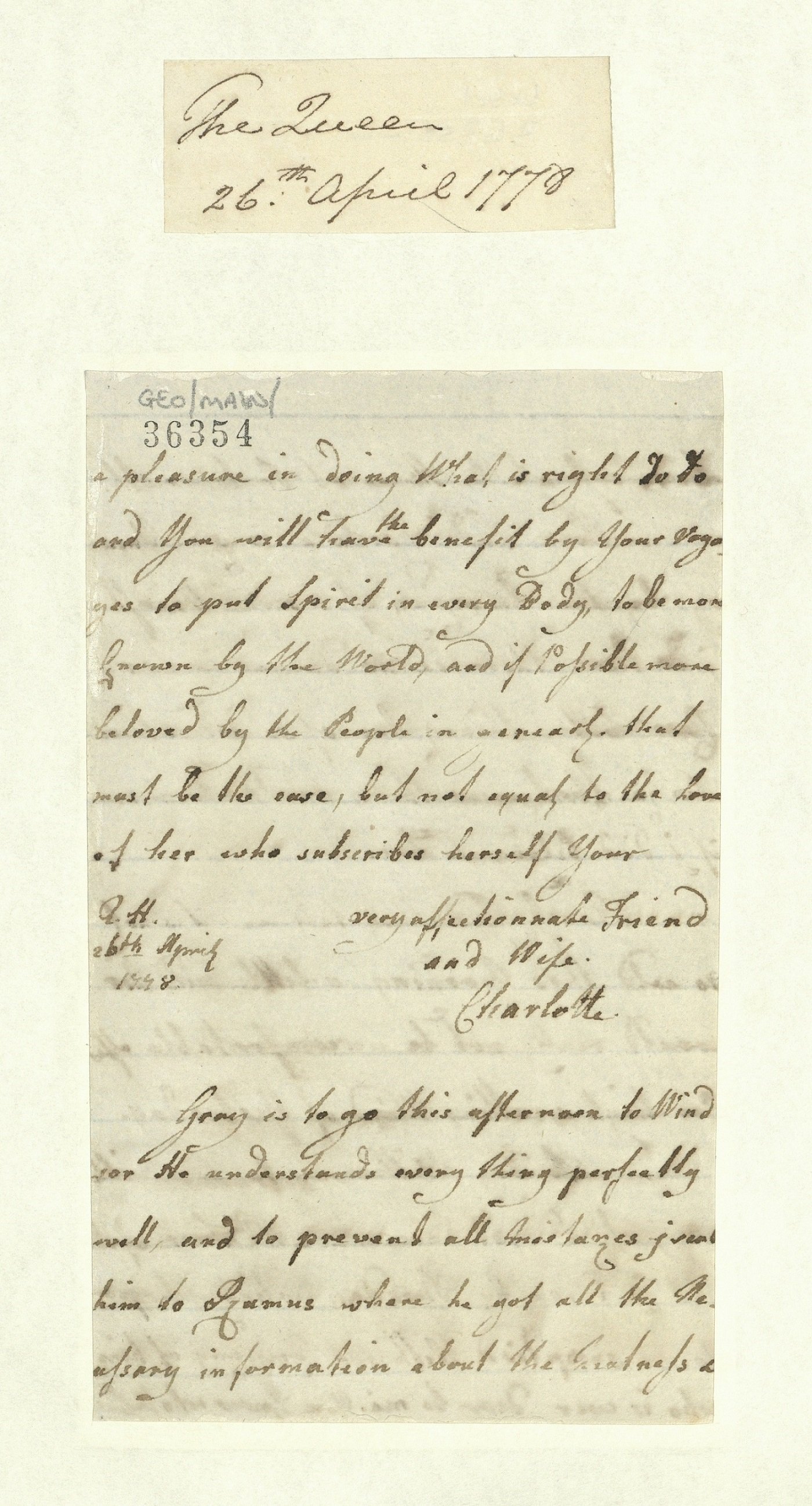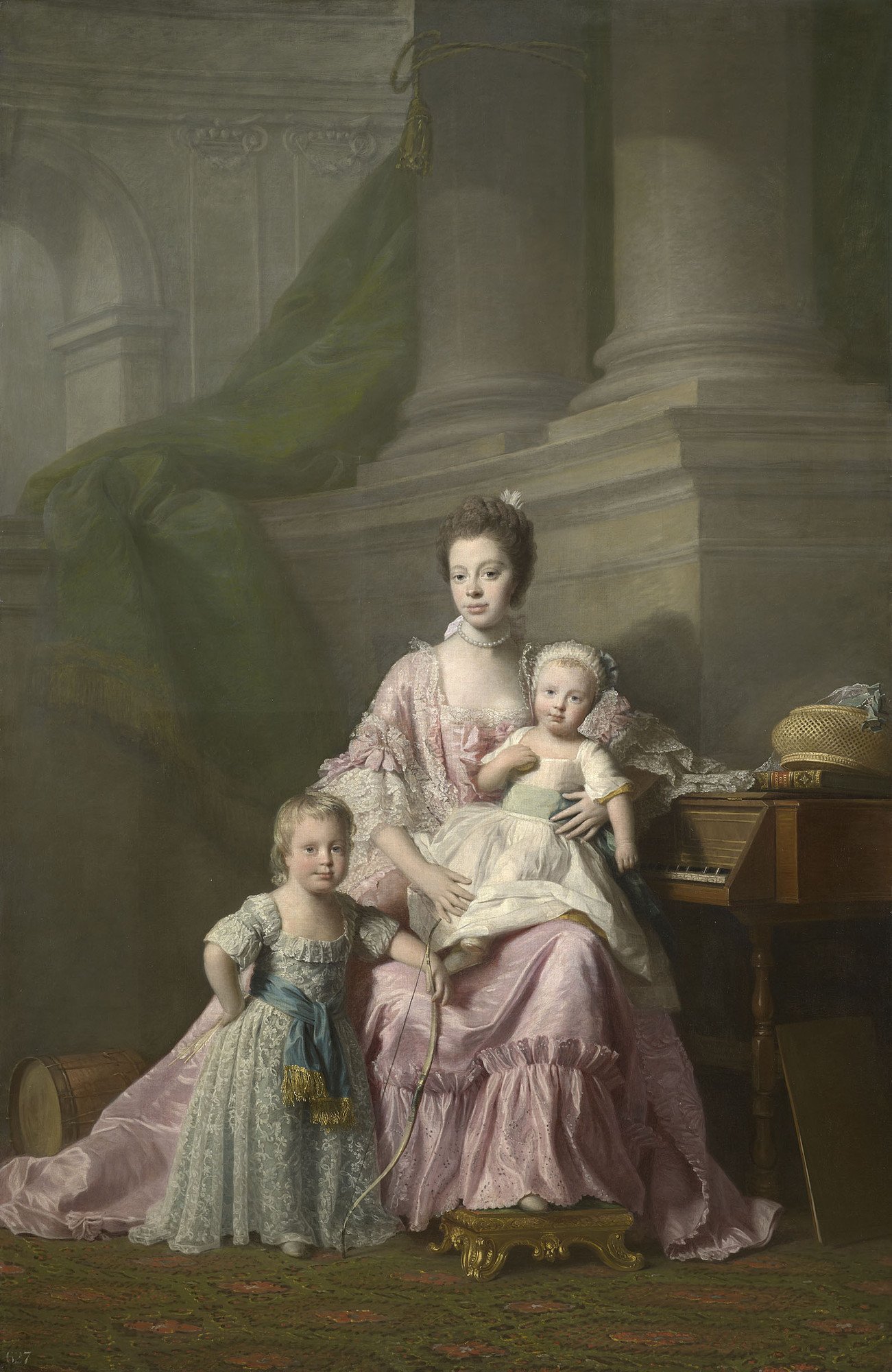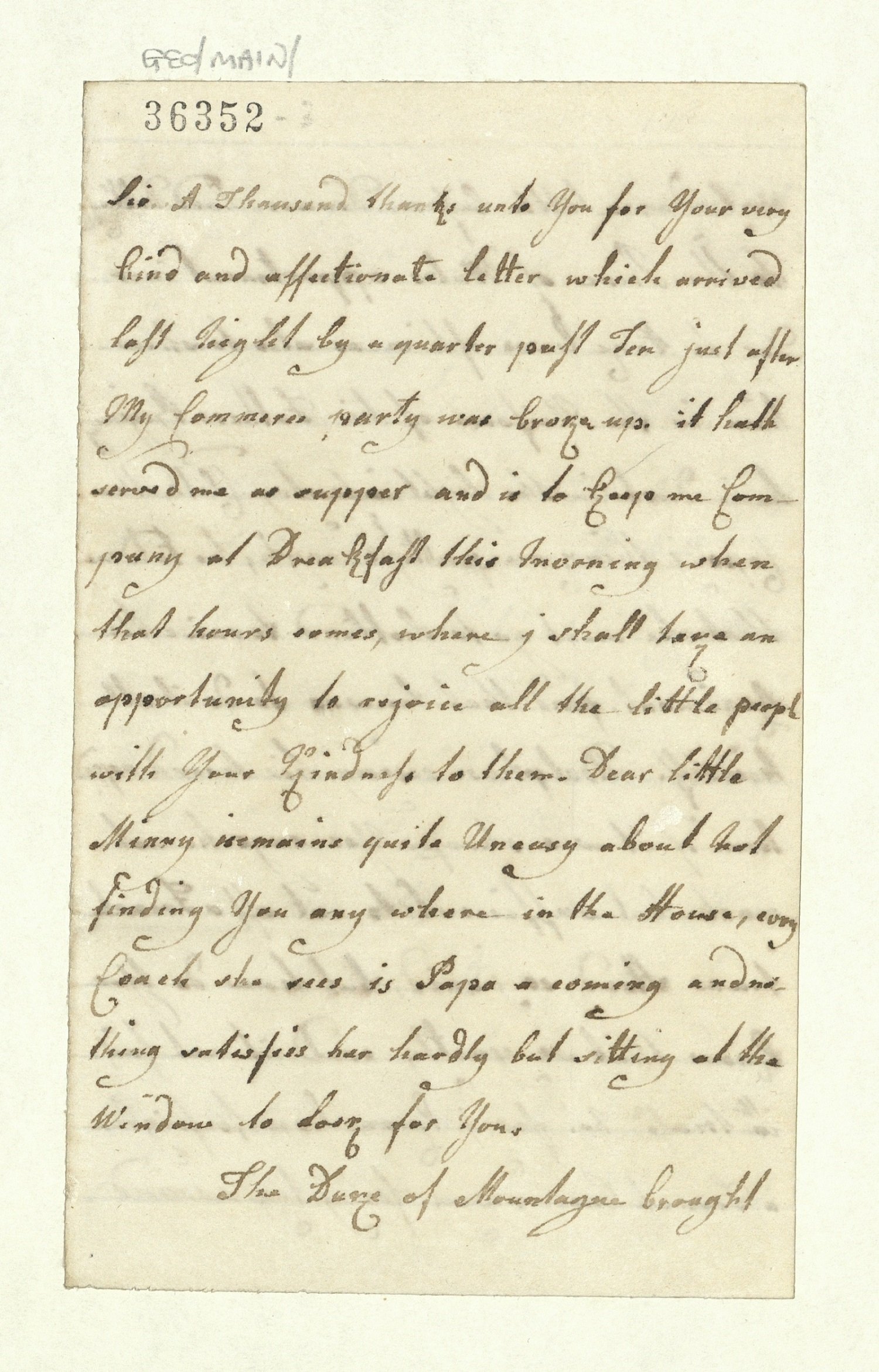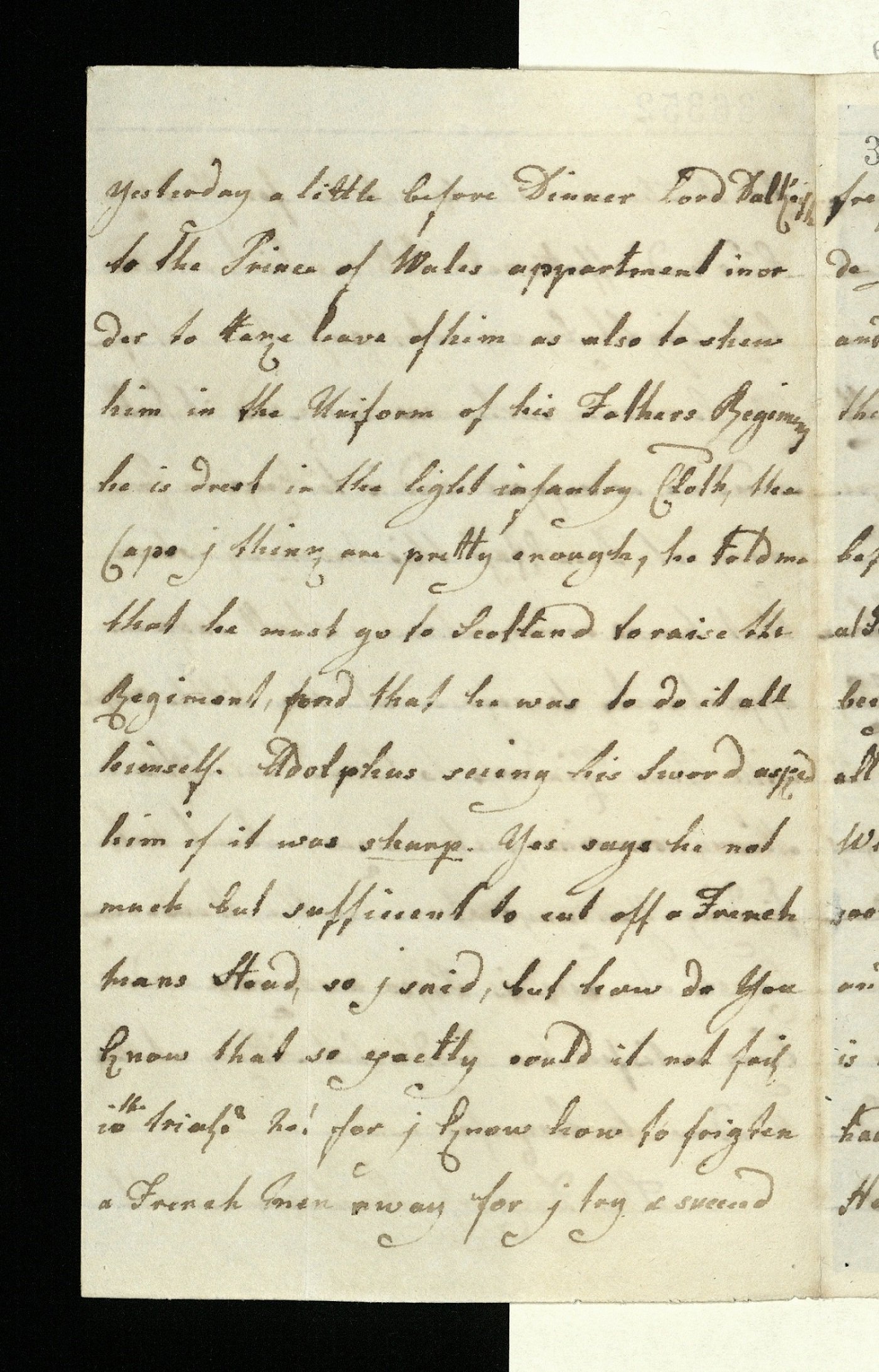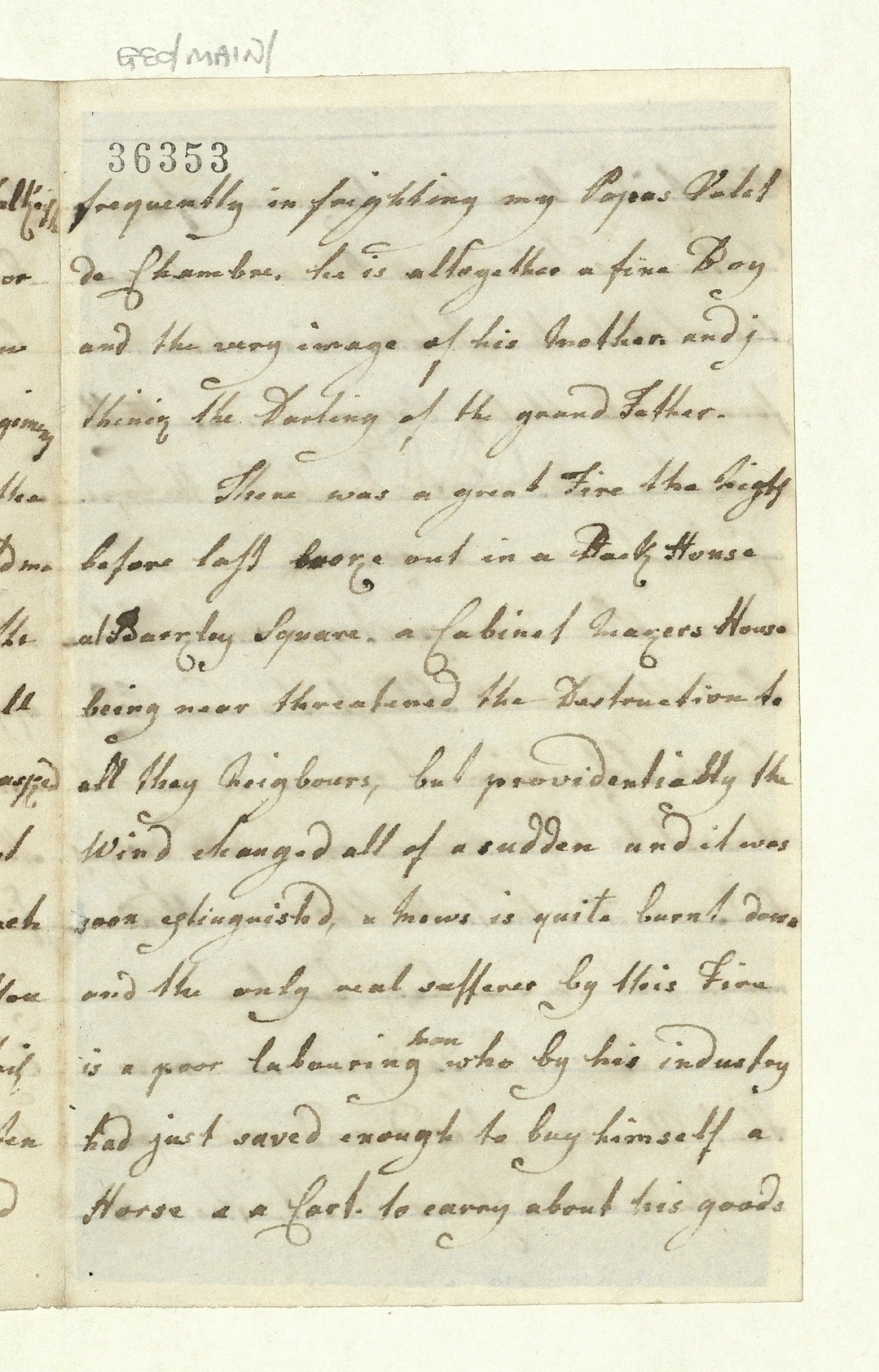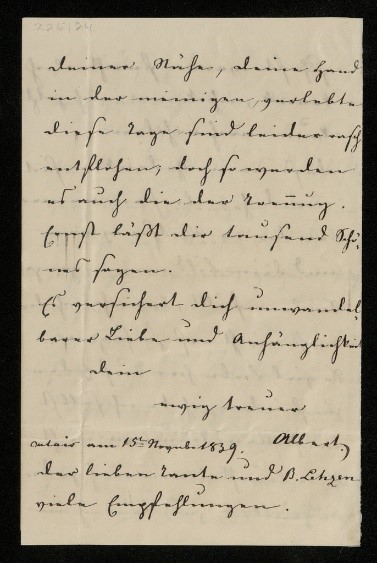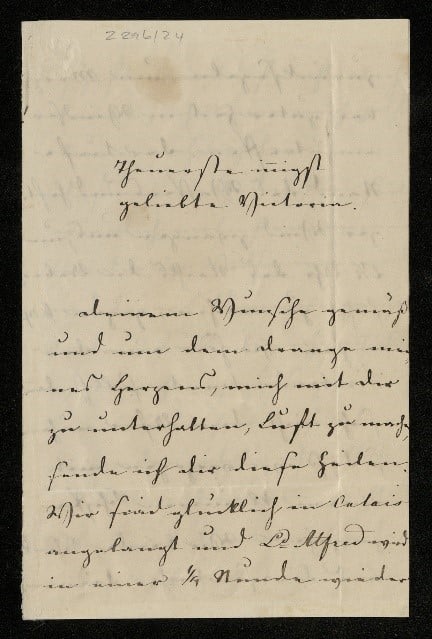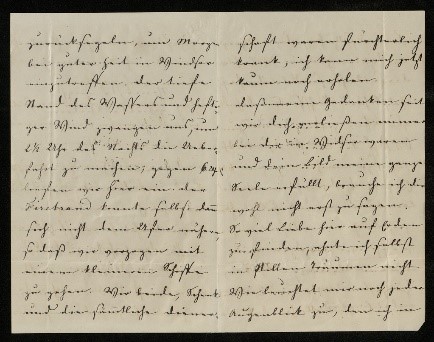Royal correspondence

The importance of keeping in touch with friends and family has been very apparent in recent times. Today, we have wonderful technology to help us to connect quickly and easily on a worldwide scale. A method of communication that has largely fallen from favour in recent decades is the humble art of letter writing; yet, for centuries, letter writing was the primary method of long-distance communication.
Here, we explore a few examples of letters written over the centuries by members of the royal family to their friends or family members – sometimes as a way to share news and gossip, and sometimes as a way to cope with separation. Explore what they wrote and how they wrote it – and you may be inspired to write a letter yourself!
A letter to a friend
This letter was written by the young Edward VI to his friend at the French court, Barnaby Fitzpatrick, when he was 14 or 15 years old. The two were close in age and, as such, their correspondence might be likened to that of modern-day pen pals. Notice that Edward’s letter begins not with the name of the recipient, but of the sender. Furthermore, Edward has illuminated his name with ornate swirls and accents. Edward has very considerately spared his correspondent from a dull letter, explaining to Barnaby at the beginning of his letter:
The causes whi we have not hitherto writen unto you, have partly been the lakke of a convenient messanger, partly bicause we ment to have some things worthie writing.
Edward continues by comparing Barnaby’s life in France during a time of political unrest with his own, opposite experiences in England, where Edward peacefully travels through the English countryside in warm weather, enjoying hunting, good food and pleasant views.
Family letters
In this letter, Queen Charlotte writes to her husband, George III, telling him that she and their children are missing him while he is away. George III and Queen Charlotte were the first British monarchs to cultivate a warm, domestic and somewhat private home life, having close connections with their fifteen children.
Although Charlotte opens by addressing her husband rather formally as ‘Sir', this long and chatty letter is full of warmth and affection. She regales her absent husband with gossip from London and aristocratic circles, and with news of their children’s antics, describing, for example, how,
little Minny remains quite Uneasy about not finding You any where in the house … nothing satisfies her hardly but sitting at the Window to look for You.
The eighteenth century was the golden age of letter writing, which developed significantly in both popularity and style over this period. Charlotte’s letter reflects many of the contemporary conventions, being beautifully written in clear, neat handwriting with the occasional elaborate flourish.
Love letters
Shortly after his engagement to Queen Victoria on 15 October 1839, Prince Albert had to return to Coburg to settle his affairs. This meant that the young couple were apart for much of their engagement, but to breach the distance they exchanged many letters. Written in the prince's native German, in this letter Albert tells Victoria about his journey to Coburg – but this is far more than an account of his travels. Rather, this is a love letter. Albert writes to his fiancé:
I need not tell you that since we left, all my thoughts have been with you at Windsor, and that your image fills my whole soul … How that moment shines for me still when I was close to you, with your hand in mine. Those days flew by so quickly, but our separation will fly equally so.
Why not try:
Although letter writing in the past adhered to certain rules and regulations of style, nowadays the art is far more relaxed and personal. A letter might involve beautiful handwriting, it might involve drawings – it might present a lot of information or not say very much at all. Whatever style it takes, the hand-written letter is a wonderful and thoughtful way of keeping in touch with a friend or loved. And so, even if it has been a long time since you last tried your hand at writing, why not dig out a pad of paper, and get in touch with someone special?




![Edward VI, King of England, Letters from King Edward the sixth to his welbeloved Sarvaunt Barnabe Fizpatrike, one of the Gentlemen of Our Prevy Chamber [sic], 1551–2 (RCIN 1121586 ) Edward VI, Letter to Barnaby Fitzpatrick](https://cmsadmin.rct.uk/sites/default/files/2.%20RCIN%20112586%20Edward%20VI%20LETTER.jpg)

